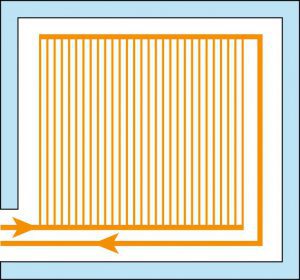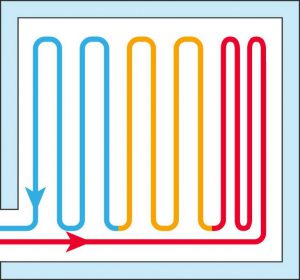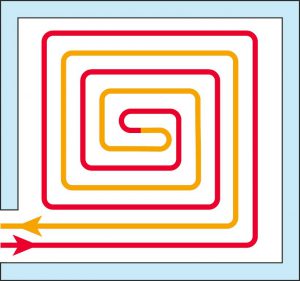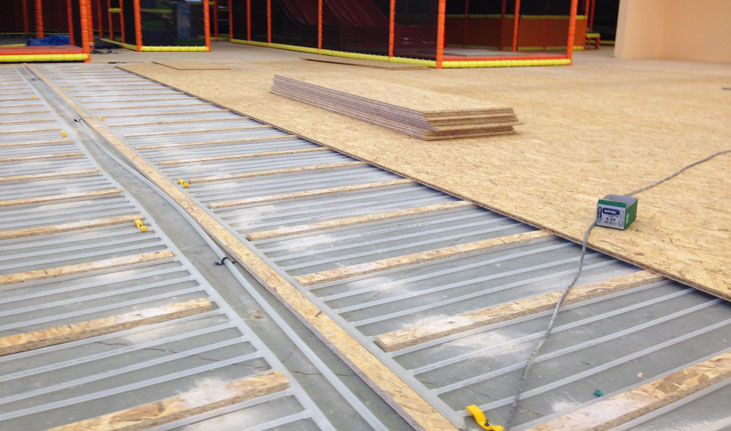Wondering why some underfloor heating systems feel even and others vary between why and cold? Parallel and serpentine are the two main ways a cooling or heating system can be installed. While the egger system uses parallel flow, serial flow is used with conventional floor heating systems.
Which form is more efficient and what advantages you can get from each choice, we will explain to you in more detail in this post.
The most important summarized
- The parallel system is named after its inventor, Tichelmann.
- The egger system is laid in parallel, whereas conventional underfloor heating systems are laid serially, i.e. in a snake-like pattern.
- The 8 cm pipe spacing and parallel registers ensure a uniform temperature without temperature fluctuations.
Cooling with Tichelmann
The Tichelmann principle draws its efficiency from the small distance covered by the water flowing through it. The uniform pressure drop results in an even distribution. The Tichelmann system thus guarantees an even temperature over the entire surface.

Figure 3: Parallel flow egger system
Compared to a classic floor cooling system, where the water has to travel 13 linear meters per square meter, with the egger system it is only 2 linear meters.
Advantages:
- Low load for floors, walls and ceilings
- Very low temperature drop (between 1 and 3 degrees)
- Homogeneous surface temperatures
- Low initial temperature reduces energy costs
- fast flow rate
The fast flow rate and low temperature differences provide fast and uniform cooling of floors, walls and ceilings. In addition, the egger system does not require any special surface material, since it works with temperatures that these surfaces can also assume without a cooling or heating system. Since the paths are kept short with the egger system, the temperature also only needs to be adjusted slightly. This also reduces energy costs.
Snake
Conventional floor cooling is installed in serial style and with the help of the single-pipe system. Typical for this are the worm or meader principle. In the meader or loop system, the pipes are laid parallel loops. Here, however, the temperature is distributed unevenly. The room is thus cooled from one side to the other. With the auger system, the temperature is distributed somewhat better, as it is moved towards the center and back out again like a snail.

Fig. 1: Classic underfloor heating according to the snake or meander principle

Fig. 2: Classic underfloor heating according to the screw principle
In both techniques, the pipe is bent during installation and is under mechanical tension. This must be compensated for by strong fastening and high overlap. 120 running meters is the maximum length of a snake. This must be distributed over the entire room, so the pipe spacing becomes correspondingly large. This one has some disadvantages.
Disadvantages:
- With a pipe spacing of 15 cm, a maximum area of approx. 15 m² can be heated.
- Slow water flow due to the high resistance
- Large difference of flow and return temperature (up to 10 degrees).
- Inhomogeneous surface temperature
Classic floor cooling also brings advantages over air conditioning systems. Each heating circuit can be controlled individually, and visually this also offers advantages, as it is not visible. Conventional models can also be well combined with a heat pump.
Conclusion
The principle of the serial monotube system already has many good features, but when the two models are compared, the Tichelmann system has even more advantages to consider. The technically adept egger system ensures a pleasant and even room temperature without temperature differences.
Due to the shortened distances, energy costs can be reduced and represents a lower load, compared to classic floor cooling systems.
You want to get to know the egger system, then contact our experts.



